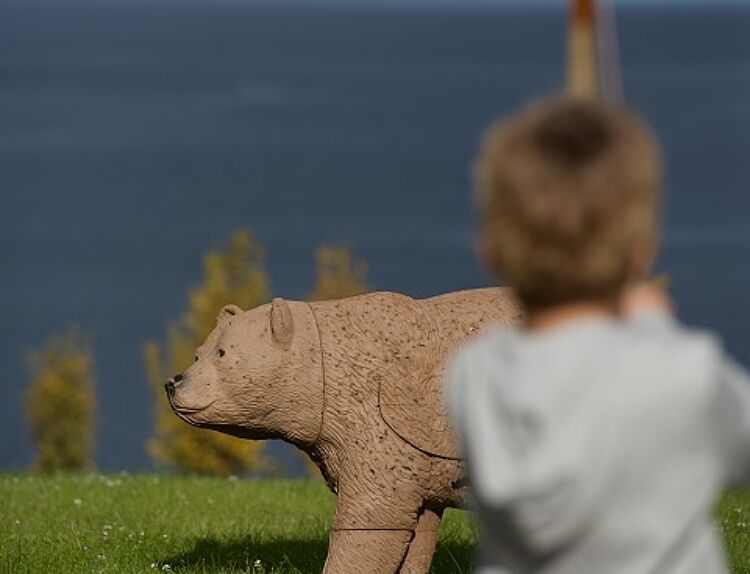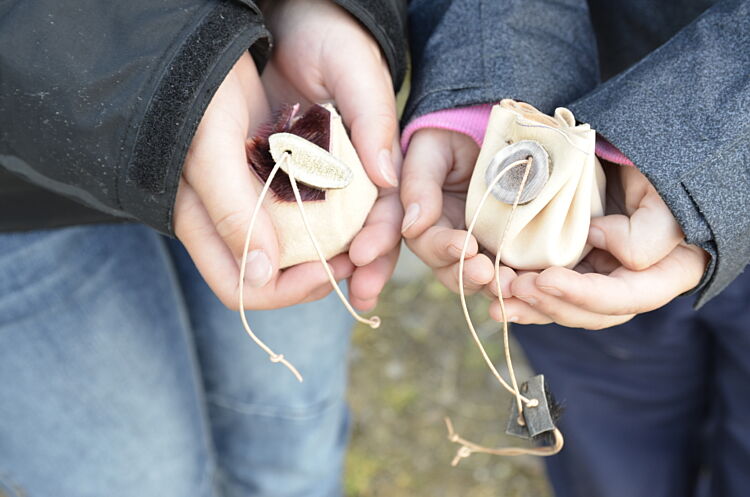The stone age days
Every September we invite the fourth grad to a day down by the shore to learn more about life in the stone age. We don’t want to only tell the kids about how people lived thousands of years ago, but also let them experience it.

The stone age days spans two weeks and we have about 60 kids visiting every day.
The day starts with a guided tour around the rock art site accompanied by an archaeologist who can answer all questions the kids or teachers might have. While out there we talk about all the scenes from the stone age pictured on the rocks and try to clear up all thoughts, questions, and myths many people have about the stone age.
After the guiding we all gather down by the shore next to our gapahuk (a three-sided wood hut) and campfire and with the kids we cook in a cocking pit. Meanwhile we talk to the kids about what people ate in the stone age and what other methods they used to cook their food. The cooking pit, which is the stone ages version of a stove, is something a lot of children never have seen or know what is. For many kids it is therefore very existing when we tell them that later we will be eating the food we have made in “the stone age way”.
While the food finishes cooking, we have other activities. The children are divided into different activity groups: hunting, food, jewelry, leather, and tools. In the groups they talk about the different themes before the children must find a way to complete the task for their group. The hunting group learns how to use a bow and arrow, the food group gathers edible growths and berries and makes tea, the tool group makes tools out of slate, the leather group makes a pouch out of leather and the jewelry group make bracelets and necklaces out of shells, antlers, and other natural materials.
After about an hour everyone meets back at the cooking pit. By now the food have finished cooking and is ready to be tasted. This is – for many- the highlight of the day, and surprisingly many thinks the food we made in a hole in the ground tastes better than food they get other places.
At the end of the day the children are left with the feeling and knowledge that the people of the stone age were creative and handy, that they lived a rich – and maybe a little tiring – life. Hopefully they have learned that people with completely different life conditions also deserves to be respected and maybe some have been inspired to follow their dream of becoming an archaeologist…?
Target group: Fourth grade
Duration: 4 hours
Group size:
